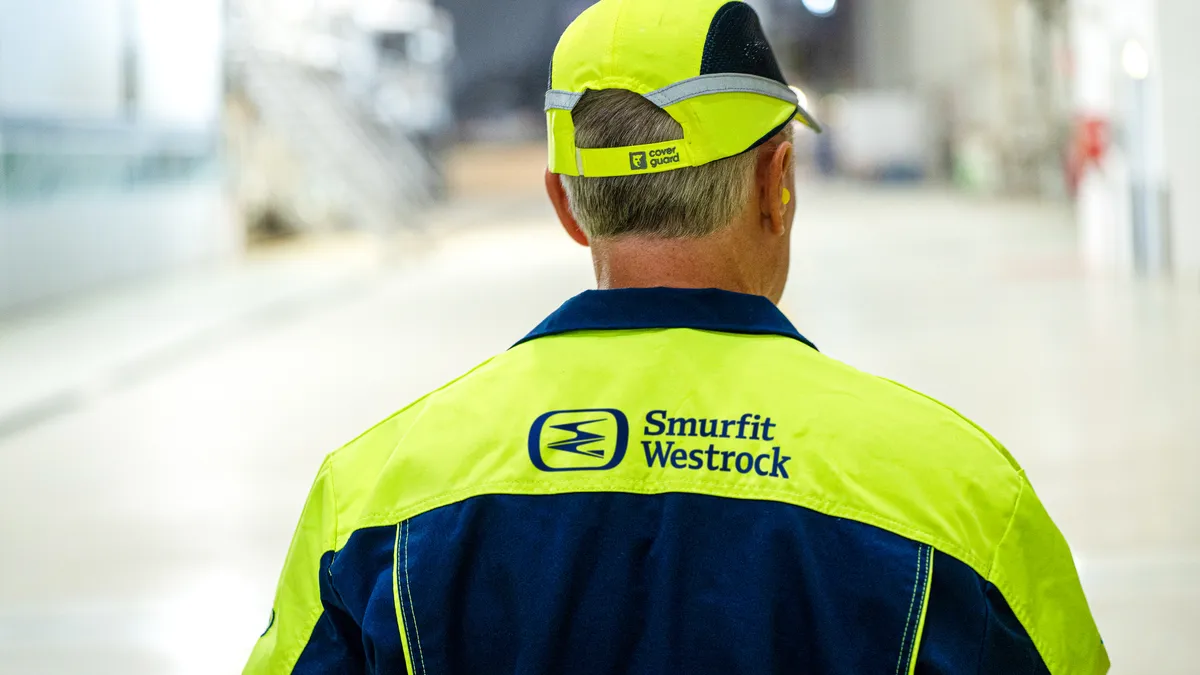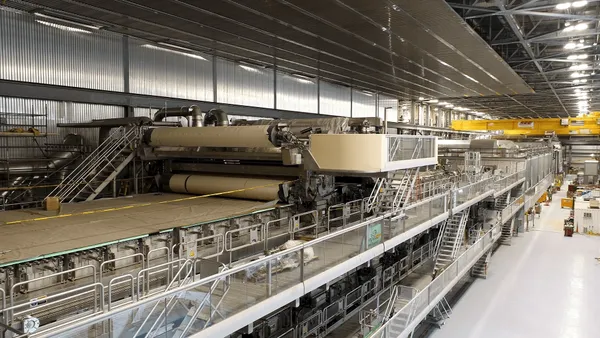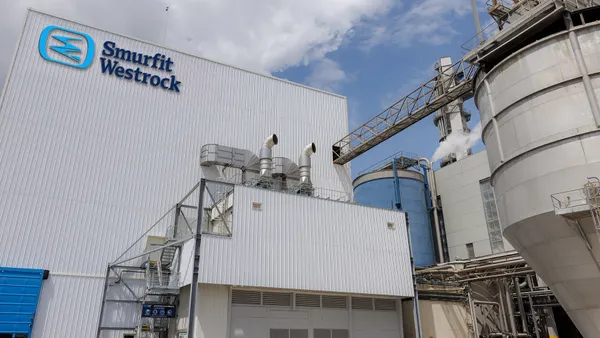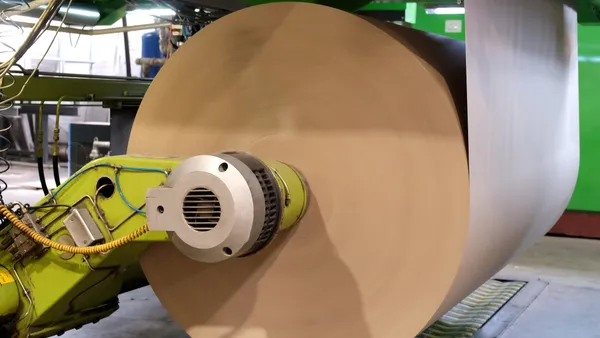Dive Brief:
- Smurfit Westrock is set to implement its first round of price increases since operating as a new company in the U.S. and Canada, effective Aug. 15, as reported by Fastmarkets RISI and confirmed by the company. This includes a $60 per ton increase on coated recycled board, uncoated recycled board, coated unbleached kraft and uncoated unbleached kraft.
- The company is also raising prices by $50 per ton for solid bleached sulfate cupstock and platestock.
- This follows recent news, shared by Truist Securities, that Graphic Packaging is raising prices by $50 per ton on CRB, CUK and SBS cupstock effective Aug. 6. PaperWorks Industries is also raising prices by $50 per ton on CRB and URB effective Aug. 9.
Dive Insight:
This move marks the first notable price change since Smurfit Westrock became the world’s largest publicly traded fiber packaging company, but it’s part of a broader trend involving multiple companies throughout the year.
Fiber product pricing has been an ongoing source of speculation and debate, as companies and analysts watch closely to see if or how their increases will be accepted by the Fastmarkets RISI index. This is the latest in a series of increases during 2024 that companies say are intended to offset lingering economic headwinds and try to catch up from some prior price increases not being recognized.
Most recently, Sonoco and Greif announced their own URB increases that were set to take effect in July. Sonoco went up by $70 per ton, while Greif went up by $50 to $70 per ton. Both companies cited higher input costs as a factor in their decisions.
Michael Roxland, senior paper and packaging analyst at Truist, cited similar factors behind this week’s news in a July 16 note to investors. He noted that the U.S. average for old corrugated containers is up 262% since January 2023 and said WestRock (prior to its recent combination with Smurfit Kappa) used an estimated 1 million tons of recycled fiber per year. Graphic reportedly consumes an estimated 1.4 million tons of recycled fiber per year. Roxland also called out notable increases in freight and natural gas costs, among other factors.
In a recent interview, outgoing WestRock CEO David Sewell cited OCC trends as one example of why certain companies have been looking to reevaluate the pricing model.
“Look at what OCC pricing has done over the last year — the fact that it’s been such an inflationary environment with OCC, but then we reduced the price of containerboard. It’s not sustainable. You can’t have companies facing massive inflation and having to lower their price,” Sewell said in late June.
Roxland noted that WestRock and Graphic previously attempted $40 to $50 per ton price increases on CRB and CRK in February “that were never recognized in the index.” This latest move is seen as a way to try and compensate.
Graphic executives, when asked during their latest earnings call about those increases not being recognized, agreed with one analyst’s statement that certain customers may still be accepting price increases regardless of what the index shows. They also noted an increasing move away from the system.
“We contract with customers on a renewal or in a new situation with pricing that we establish both with them and with us. What we're really talking about is how input cost inflation moves over time up or down and there's a variety of different methodologies to do it. We've been moving away from third-party indexes for years,” said CEO Michael Doss. “And now we're just going to accelerate that process going forward.”













